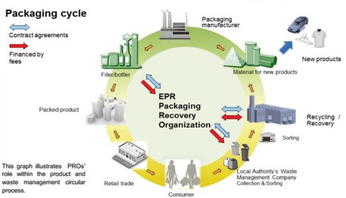Anode Layer Linear Ion Source for Roll-to-Roll Process from 300 mm to 1550 mm
Presented by Seunghun Lee, Korea Institute of Materials Science
Roll-to-roll (RTR) process requires a linear surface treatment source in various processes such as pre-treatment, etching, and deposition. For high speed and large width processes the linear source should have superior characteristics that can be applied to 100~300 m/mim process and large width treatment up to 2 m. Several linear surface treatment sources have been proposed to the RTR process. For example, a dual magnetron sputtering (DMS) plasma enhanced chemical vapor deposition (PECVD) and a linear deposition source using a magnetic layer linear ion source have been introduced recently [1,2]. These sources showed outstanding performances for deposition methods. In pre-treatment and etching parts a RF plasma source, a glow discharge and a linear ion source have been used widely. Especially the linear ion source has been applied to the surface pretreatments from polymer to steel. There are two types of the linear ion source, a magnetic layer and an anode layer ion source. The magnetic layer source is convenient to generate plasma with low energy electrons for PECVD applications as mention above. In contrast, the anode layer linear ion source (ALIS) can emit high energy ion beams uniformly up to 2 m. The robust structure and reliable ion beam extraction are other attractive characteristics of the ALIS in RTR process.
Actually there are many application parts of the ALIS in RTR processes. Nevertheless several problems are issued in the practical field of ALIS applications. The problems are a substrate contamination by cathode erosion, an ion beam focusing, the enhancement of ion beam current density for the high speed RTR process. To enhance the ALIS performance and solve the problem, numerous methods have been adapted to the ALIS. For example, General Plasma Inc. (GPi) has developed a point pole anode layer source (PPALS), which uses a point pole cathode to focus ion beams and to reduce the contamination [2]. However, unfortunately, there is no clear description about an ion focusing and an electron trapping in the ALIS. Though we can use the ALIS well in many applications, clear descriptions about the ALIS discharge are required to invent extraordinaryALIS for a high speed RTR process.
Before 3 years ago, Korea institute of materials science (KIMS) has researched about the ALIS. Also we designed KIMS identified ALIS to realize the high speed RTR process, which requires the dynamic etching rate of 3000 nm-m/min at steel substrates. To increase the etching rate with stable ion beam extractions, we developed the ALIS by using a computer simulation and an experimental research. Particle-in-cell (PIC) method was used to calculate the plasma behaviors in the ALIS [3,4]. And an ion beam current was measured by using multi array Faraday cups. In this work, we summarized out recent researches and the direction of further works.
This post is for paying members only
SubscribeAlready have an account? Log in

